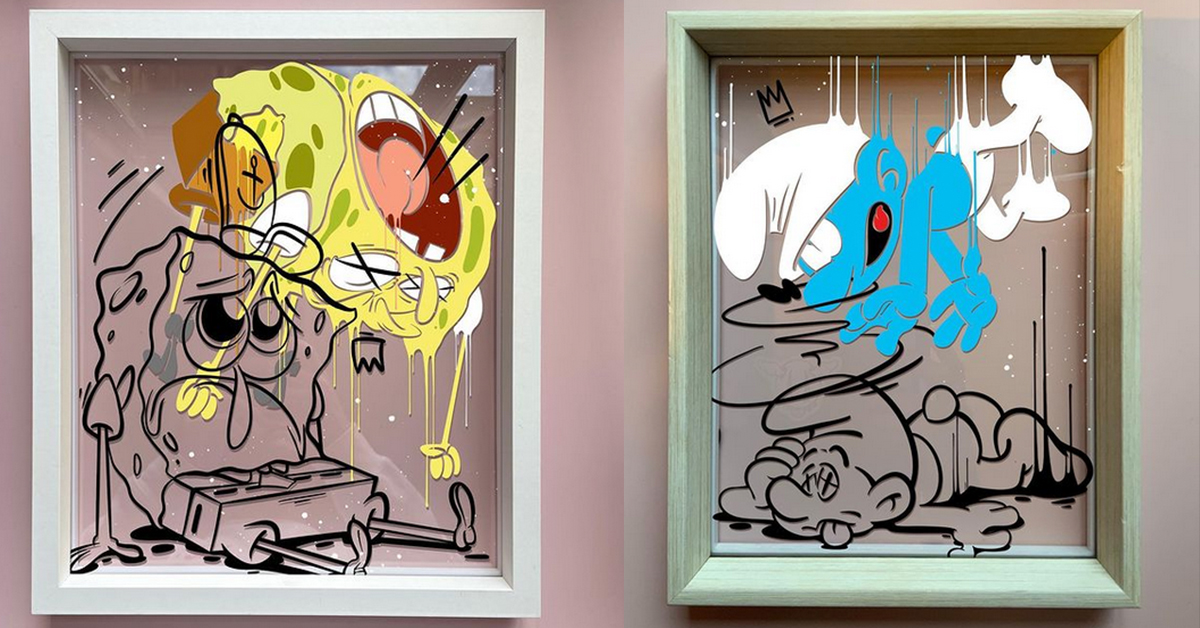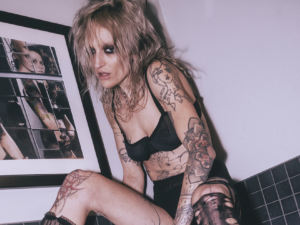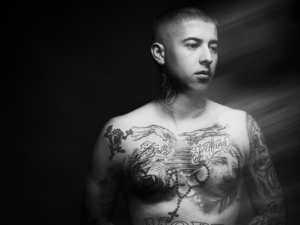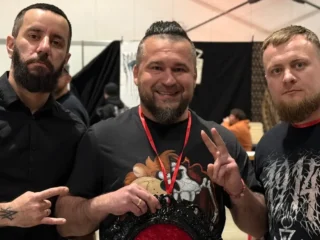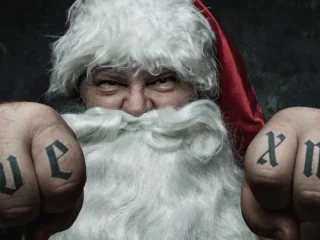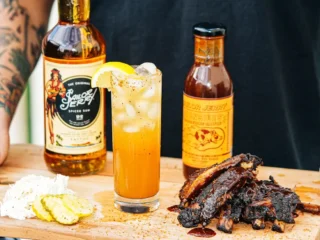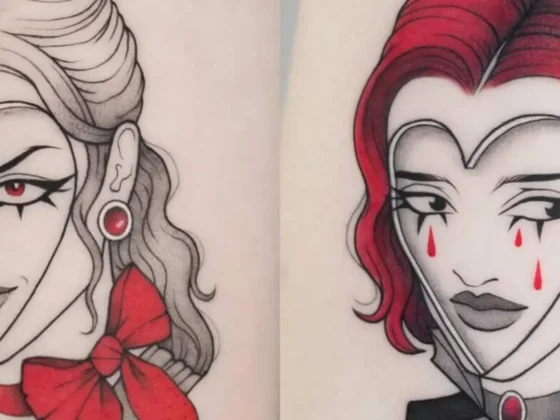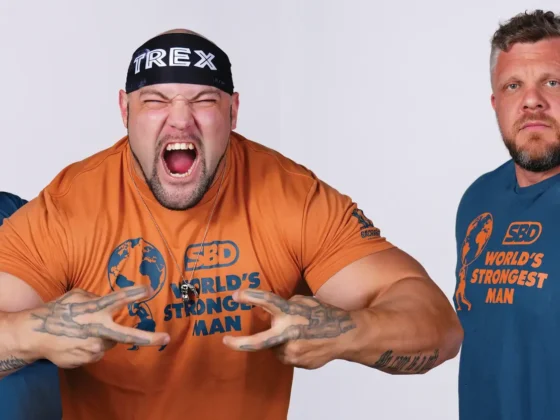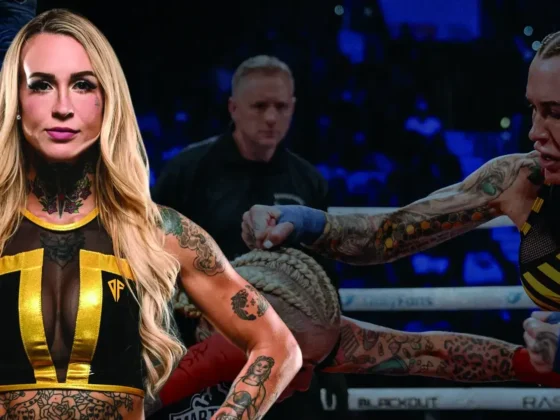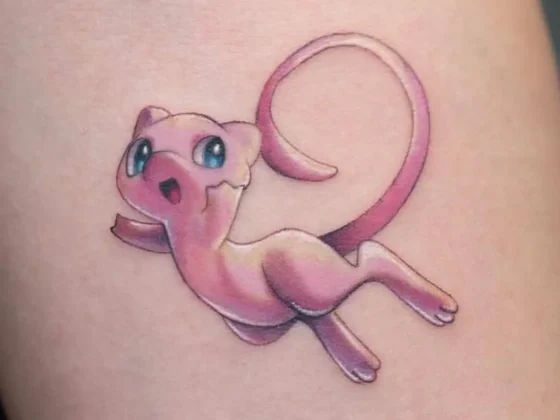Charlie Connell
August 27th, 2021
Saturday Morning Graffiti
Opake takes the cartoons of his childhood and puts them through a graffiti filter, transforming pop icons into something you’ve never seen before.
It doesn’t matter when or where a person grew up: Every child has been told that if you keep watching those cartoons your mind will melt. Most of us have nothing more than vague memories of the countless hours we spent watching Bugs, Daffy, Mickey and Stimpy, but Opake’s artistic sensibilities were formed by Saturday morning cartoons. We spoke with the talented artist about many things, including the way he works pop culture icons into his graffiti, the secret to creating artistic script and the tattoo images he can’t stop going back to.
View this post on Instagram
Do you remember the first time you fell in love with art?
I I was 9 and I was on holiday with my family in France. We stopped at a service station and my mum bought me my first copy of “Bomb It” magazine, which I still have on the shelf now. I remember just wanting to find out everything I could about that art form. How it was done, why [it was done] and, mainly, who was doing it. From then on, letter-based graffiti became my obsession and I made it my mission to find out everything I could about it.
When did you know you wanted to become an artist?
I always knew I wanted to do something creative from a really young age. I started painting graffiti from around 13, but when I hit my twenties I got heavily involved in the rave scene (and the nefarious activities associated with it). I was painting and sketching daily but it was purely for my own enjoyment and I hadn’t yet realised this was something I could make a career out of. It was only after getting clean and sober that I really started to focus on pushing my own style of art forward—the disintegration of pop culture.
View this post on Instagram
We’re guessing you were a big fan of cartoons growing up. What were some of your favorites and what drew you to them?
It’s got to be “Ren and Stimpy,” although I’ve never painted them. I like a lot of the fringe characters from cartoons: the big chief from “Peter Pan,” the alley cats in “Tom and Jerry” and it’s always got to be the villains!
Which character could you paint 10,000 times without getting tired of it?
Mickey Mouse, he’s so versatile. Pull him apart and you can always recognize his iconic figure.
What was the first medium you worked in?
The first piece I painted was on the back of a garage with War Hammer pot paint, a fine-tip brush and my fingers when I was 9. I had no idea what I was doing! Following that, a friend and I went and stole a load of spray paint from a hardware shop and would climb out of our bedroom windows in the middle of the night wearing hockey masks—looking like mini Jason Voorhees—and painted fence panels with zero style.
View this post on Instagram
How did graffiti and street art influence you?
Graffiti is 24/7 for me in my mind. Although I don’t go out and paint as often now, it still drives me 100 percent.
Tell us about how you came to find the signature script you use.
Tagging, throw-ups and that raw gritty side of graffiti is what it’s all about for me. My main focus with my work is on elevating my own form of handstyles and combining that element of graffiti to pop art. Ninety percent of people assume a tag is just a scribble, but hundreds of hours of work go into perfecting it if you want to do it properly. Just look at people like Some from Birmingham, House from NYC, Skuf, WKK, the list is endless, but those are a few examples of people who, in my opinion, totally get what this is about.
View this post on Instagram
How do you find a balance between style and legibility when doing script? Does legibility even matter?
Yes and no. Legibility doesn’t necessarily matter. It’s about creating a flow from one letter to the next to essentially create something that has your own stamp on it and aesthetically looks grimey. Dependent on where you are in the world, the legibility of it is down to the individual. In Philadelphia they write tags that are totally unique to that city, same in São Paulo. With regards to what I do, I like legibility. It’s how I enjoy writing and the personal style I have developed and subconsciously evolved. You often depict legendary cartoon characters covered in tattoos. Tell us where that inspiration came from. One of my main interests, other than graffiti, is tattoo culture. It’s a scene I’ve always wanted to be involved with since I was a young teen. When I was 14 I did my first tattoo on my arm and my ankle with a needle and India ink and they’re still on my skin today. I started an apprenticeship in a tattoo shop at 21, it didn’t work out, but it’s something I will always have a love for. Traditional bold line work and colors are elements I try to bring to my work. If you look at traditional animation cels it’s all bold black lines and block colors and there’s a reason why that style of cartoon still holds weight today. It’s timeless, just like traditional tattoo work—the panther head and dagger and anchor—just like vintage cartoons, they are timeless images.
View this post on Instagram
Was the decision to start painting on glass an homage to animation cels?
I’m always trying to move my work forward and not to stagnate in one thing for too long, so glass was a natural progression for me. It allows me to play with concepts and layering techniques as well as also being a little nod to the old animation cels.
You’re doing a sale of a NFT right now. What made you choose to do this? Do you think there is a future for NFTs in the art world or that the bubble will burst soon?
Technology has boomed in the last ten years, and like everything, the art scene has to move with the times. For me personally I like something tangible, but I see the value in it and understand why people want to collect them. I see the benefit to it once you add the animation. Especially with my style of work, the possibilities are endless. It’s new terrain for me, but I’m excited to be involved and see to what level it can take my work.
View this post on Instagram
Editor's Picks
Royal & The Serpent
The hilarious and talented musician talks mental health, music, tattoos and more
Son of a Sinner
From rough-and-tumble roots to mainstream stardom, this genre-crossing musician is on a roll
A Cut Above
Celebrated barber Vic Blends can charge whatever he wants for a haircut, but all he really wants in exchange is a conversation and human connection

